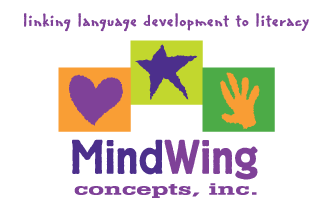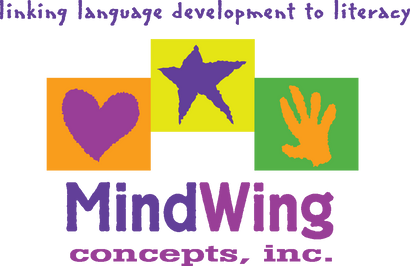Secure Checkout. FREE SHIPPING for Continental U.S. Orders over $60.
Menu
-
- Home
-
About Us
-
The Approach
-
Linking Language & Literacy
-
MindWing Learning
-
Learning Resources
-
SHOP
-
Blog
-
- About MindWing
- Our People
- Contact Us
- Your Account
- Login
-
United States (USD $)

Secure Checkout. FREE SHIPPING for Continental U.S. Orders over $60.

Tech Tuesday: Story-Form Directions and Play!
December 19, 2022
 Being told what to do is often no fun. But for many of us targeting language development objectives, we have to deal with our students’ potentially low scores on assessments such as the CELF-5s Following Directions subtest. Key to success on activities such as these are student’s listening skills and understanding of concepts related to time, space, number, and sequence, among others. The good news is that these concepts are everywhere and can be targeted through stories and play! One way I have been approaching this is through the Toca Life: World app, previously discussed here. The app is available for multiple platforms as you can see, and you can either purchase individual “Settings” (e.g. Toca Life: Vacation, which I like to refer to with colleagues as The White Lotus), or connect purchased apps through the World app. The World app also has mini-settings you can purchase for short money, for example, a ski resort. I have been using the book Where’s Walrus? by Stephen Savage with students recently (video here) (recall: using picture books on YouTube can work wonderfully with heavy use of the pause button)...
Being told what to do is often no fun. But for many of us targeting language development objectives, we have to deal with our students’ potentially low scores on assessments such as the CELF-5s Following Directions subtest. Key to success on activities such as these are student’s listening skills and understanding of concepts related to time, space, number, and sequence, among others. The good news is that these concepts are everywhere and can be targeted through stories and play! One way I have been approaching this is through the Toca Life: World app, previously discussed here. The app is available for multiple platforms as you can see, and you can either purchase individual “Settings” (e.g. Toca Life: Vacation, which I like to refer to with colleagues as The White Lotus), or connect purchased apps through the World app. The World app also has mini-settings you can purchase for short money, for example, a ski resort. I have been using the book Where’s Walrus? by Stephen Savage with students recently (video here) (recall: using picture books on YouTube can work wonderfully with heavy use of the pause button)...

Tech Tuesday: Internalizing Icons!
September 27, 2022
 Story Grammar Marker® provides visual support for understanding and forming narrative, but part of its work depends on students ascribing meaning to its icons. Helping students internalize these visuals, their connections and meanings can take some review, and the more fun, the better! Here are a few tech-infused ways to drill-play the SGM® icons! Use a Slideshow! Google Slides can be a great way to make a digital “manipulative” for review. Pick a personal narrative or reviewed story to talk through, then use the Slideshow mode as a “quiz” on the icons alone or linked to contextualized story elements (e.g. “Kick-Off- the Bear’s kick-off was that someone stole his hat!”)...
Story Grammar Marker® provides visual support for understanding and forming narrative, but part of its work depends on students ascribing meaning to its icons. Helping students internalize these visuals, their connections and meanings can take some review, and the more fun, the better! Here are a few tech-infused ways to drill-play the SGM® icons! Use a Slideshow! Google Slides can be a great way to make a digital “manipulative” for review. Pick a personal narrative or reviewed story to talk through, then use the Slideshow mode as a “quiz” on the icons alone or linked to contextualized story elements (e.g. “Kick-Off- the Bear’s kick-off was that someone stole his hat!”)...

Tech Tuesday/Summer Study Series: A Continuum of Explicit to Implicit Learning
July 25, 2022
In this penultimate entry in the 2022 Summer Study Series, we’ll explore how the use of tools such as Story Grammar Marker® can gibe with models of instruction and learning. Baron and Yarbel’s (2022, brand new!) An Implicit–Explicit Framework for Intervention Methods in Developmental Language Disorder is a tutorial describing theories of learning related to language disorder and associated modes of intervention. This article explores a neurologically based understanding of how we might learn explicitly: consciously trying to memorize information, facts, or apply skills, vs. implicitly: picking something up naturalistically and without really trying. These ways of learning can inform how we use tools such as SGM® particularly with young children with language disorders...

Tech Tuesday/Summer Study Series: The Moral of the Story is…
June 27, 2022
 As someone who loves themes and context, I was thrilled to find a particular study on assessment and intervention with FABLES to include as this entry in the 2022 Summer Study Series! This resource made me think back to last year’s discussion of using moral dilemmas in narrative language and social cognitive therapy activities. This post includes the advantage of having many adaptable materials to offer you! Specifically, we are talking about Philosophy for Adolescents: Using Fables to Support Critical Thinking and Advanced Language Skills (Nippold and Marr, 2022), an extensive article describing the authors’ work in assessing and intervening in language and critical thinking skills through fables...
As someone who loves themes and context, I was thrilled to find a particular study on assessment and intervention with FABLES to include as this entry in the 2022 Summer Study Series! This resource made me think back to last year’s discussion of using moral dilemmas in narrative language and social cognitive therapy activities. This post includes the advantage of having many adaptable materials to offer you! Specifically, we are talking about Philosophy for Adolescents: Using Fables to Support Critical Thinking and Advanced Language Skills (Nippold and Marr, 2022), an extensive article describing the authors’ work in assessing and intervening in language and critical thinking skills through fables...

Tech Tuesday: Mix it Up!
April 25, 2022
 Though it should be a 12-month goal, this April—during Autism Acceptance Month—it’s important for us to be making strides toward considering what and how our students want to learn. Doing so gears us toward aligning with the client values aspect of Evidence-Based Practice and with implementing therapies that are responsive to neurodiversity. In this way, it’s helpful to consider the flexible aspects of tools such as Story Grammar Marker®, so that we can show and affirm with clients that there are many ways to express ourselves. I recently was completing a lesson and activity with a group of middle school students about a topic I consider to be critically important right now: RESILIENCE. Resilience is in many ways wrapped up in narrative language because of the role of how we relate our own experiences (stories) to ourselves...
Though it should be a 12-month goal, this April—during Autism Acceptance Month—it’s important for us to be making strides toward considering what and how our students want to learn. Doing so gears us toward aligning with the client values aspect of Evidence-Based Practice and with implementing therapies that are responsive to neurodiversity. In this way, it’s helpful to consider the flexible aspects of tools such as Story Grammar Marker®, so that we can show and affirm with clients that there are many ways to express ourselves. I recently was completing a lesson and activity with a group of middle school students about a topic I consider to be critically important right now: RESILIENCE. Resilience is in many ways wrapped up in narrative language because of the role of how we relate our own experiences (stories) to ourselves...

Tech Tuesday: “Storyboard That!”
February 21, 2022
 Among the tech resources that can be helpful in narrative intervention are those that let you make your own story. Content creation apps and websites, often called “digital storytelling” tools (search Pinterest for many examples in this genre), provide great contexts for speech, language and literacy skill development for their ability to visualize story elements in cartoons or images. Digital storytelling tools can be employed in parallel with Story Grammar Marker® manipulatives, icons, and maps in a variety of ways: You make it: Create a product that you can “unpack” the story elements of with students, with SGM® playing a key scaffolding role, of course. We make it: Co-create with students by allowing them to make choices to construct a story, with you handling parts or all of the actual tapping or clicking to move things along. They make it: Often facilitated with you providing a model...
Among the tech resources that can be helpful in narrative intervention are those that let you make your own story. Content creation apps and websites, often called “digital storytelling” tools (search Pinterest for many examples in this genre), provide great contexts for speech, language and literacy skill development for their ability to visualize story elements in cartoons or images. Digital storytelling tools can be employed in parallel with Story Grammar Marker® manipulatives, icons, and maps in a variety of ways: You make it: Create a product that you can “unpack” the story elements of with students, with SGM® playing a key scaffolding role, of course. We make it: Co-create with students by allowing them to make choices to construct a story, with you handling parts or all of the actual tapping or clicking to move things along. They make it: Often facilitated with you providing a model...
